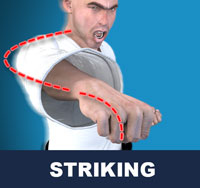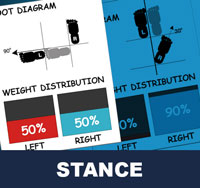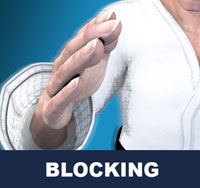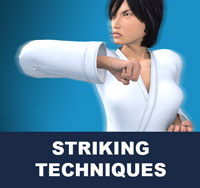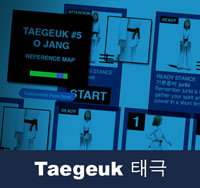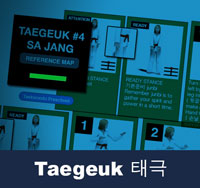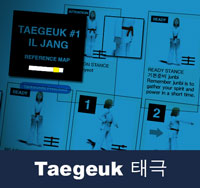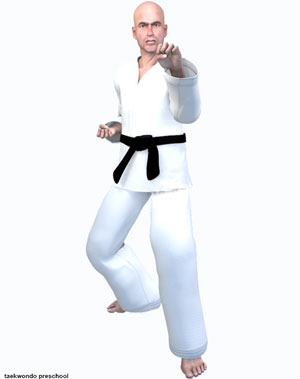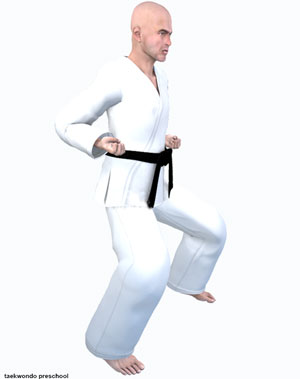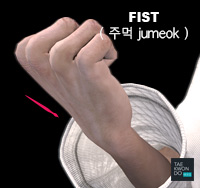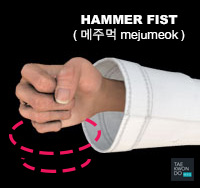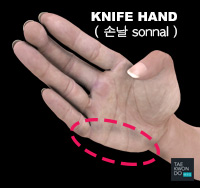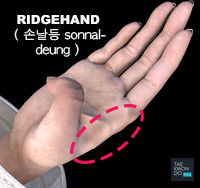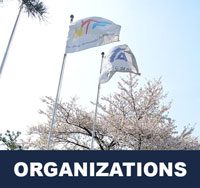Taekwondo 태권도Taekwondo Preschool
Promotion from one geup to the next can proceed rapidly in some schools, since schools often allow geup promotions every two, three, or four months. Students of geup rank learn the most basic techniques first, and then move on to more advanced techniques as they approach first dan. Many of the older and more traditional schools often take longer to allow students to test for higher ranks than newer, more contemporary schools, as they may not have the required testing intervals. View Taekwondo belt levels »
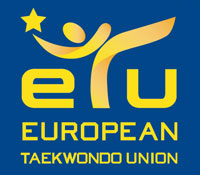
European Taekwondo Union (ETU)
Two of the most popular systems of taekwondo are named solely after their respective organizations: the World Taekwondo (WT) and the International Taekwon-Do Federation (ITF).
The European Taekwondo Union (ETU) is the official governing body for all Taekwondo matters in Europe as a regional organization of the World Taekwondo (WT). It comprises the National Taekwondo Federations of all the European member nations and regulates all Taekwondo matters on a continental basis. The first participating countries in the ETU were Spain, Belgium, Austria, Portugal, Germany, Italy, France, Netherlands, Turkey, Greece, Denmark and the UK. The first president was Antonio Garcia de la Fuente. The First European Championships of the ETU were held in Barcelona on May 22–23, 1976. After being considered only a demonstration sports event twice - in Seoul 1988 and Barcelona 1992 - the World Taekwondo (WT) style (Olympic Style Taekwondo) - was incorporated as a full Olympic discipline in Sydney in 2000.
Members of the European Taekwondo Union (World Taekwondo (WT) Style) uses the Hyeong Poomse style of teaching Taekwondo.
The 5 Tenets of ETU (World Taekwondo (WT) Style) Taekwondo
- Etiquette
- Modesty
- Perseverance
- Self Control
- Indomitable Spirit
The ETU (World Taekwondo (WT) Style) Taekwondo Student Oath
- to observance the tenets of Taekwondo
- to have respect for instructors and fellow students
- to never misuse the art of Taekwondo
- to be a champion of freedom and justice
- to help build a more peaceful world
Advancement
Advancing through the belts is done by a system of gradings. Gradings are typically held in 3 month cycles at regional training centres. Grading systems will typically consist of line work, patterns, theory, and sparring. Students can typically advance through the belts at a rate of 1 geup every 3 months. Although it is possible for students who perform exceptionally well during their grading to 'double promote', this means that they gain 2 geup instead of one. This is however not very common and is only done if the student has exhibited complete understanding of the material they are being tested on as well as control and maturity. A double promotion is not possible for a student of red belt (2nd geup) because their instructor is not permitted to grade them for their black belt.
ETU uses the following system of Belt Gradings:
- 10th geup - White belt (white signifies innocence, as a student with no previous knowledge of Taekwondo)
- 9th geup - White belt with yellow tag
- 8th geup - Yellow belt (yellow signifies earth, from which the metaphorical plant sprouts forth and takes root as the foundations of Taekwondo are laid)
- 7th geup - Yellow belt with green tag
- 6th geup - Green belt (green signifies the plant's growth as skills are developed)
- 5th geup - Green belt with blue tag
- 4th geup - Blue belt (blue signifies heaven, towards which the plant is growing as training progresses)
- 3rd geup - Blue belt with red tag
- 2nd geup - Red belt (red signifies danger, cautioning the student to exercise control and warning opponents)
- 1st geup - Red belt with black tag
- 1st Dan - Black belt (black is opposite to white and signifies maturity and proficiency in taekwondo)

Training Safety Precautions
Starting with coloured belts taekwondo students must learn Breaking ( 격파 gyeokpa ). As they progress through the ranks, the breaks they perform increase in difficulty as do the number of boards. Wooden boards are the most common breaking item in most martial arts.
There are safety concerns with taekwondo breaking ( 격파 gyeokpa ), so one should seek out a certified Master Instructor ( 사범님 sabeomnim ). There are many small bones of the foot ( 발 bal ) and hand ( 손 son ) which need to be very carefully and slowly conditioned for safety. Repeated damage to the extensor capsules of the knuckles can lead to long term problems with dexterity. View Breaking ( 격파 gyeokpa ) »
* Please see a certified Master Instructor ( 사범님 sabeomnim ) for training. Proper guidance and instructions are needed to ensure safe training.
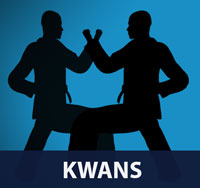
Related Articles
Original Taekwondo Kwans ( 관 )
In addition to these private organizations, the original taekwondo schools ( 관 kwans ) that formed the organization that would eventually become the Kukkiwon 국기원 continue to exist as independent fraternal membership organizations that support the World Taekwondo (WT) and the Kukkiwon 국기원. The official curriculum of the kwans is that of the Kukkiwon 국기원. The kwans also function as a channel for the issuing of Kukkiwon dan and poom certification (black belt ranks) for their members. View Taekwondo Kwans ( 관 ) »
RESOURCES
This article uses material from the Wikipedia article "European Taekwondo Union", which is released under the Creative Commons Attribution-Share-Alike License 3.0.



